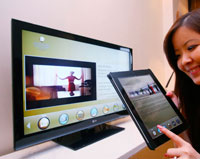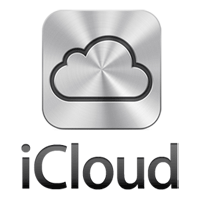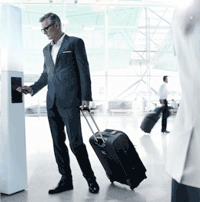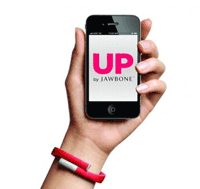With mobile technology redefining and pushing the boundaries of our expectations almost everyday, a shift towards hyperconnectivity is inevitable. In fact, according to GSMA, an association that represents mobile operators worldwide, the number of mobile connections is predicted to rise from 6.6 billion in 2011 to 9.1 billion in 2015, making the internet and mobile technology ever more ubiquitous. Based on findings by JWT Intelligence, the research arm of marketing communications firm JWT, these are the five most prominent trends that will forever change our lives and the way we travel and work:
 Everything is “smart”
Everything is “smart”
In the not so distant future, smartphones won't be so hot anymore as absolutely everything will be "smart". According to JWT Intelligence, “all kinds of things from cars to refrigerators and entire homes” will be connected to the web, making them all multifunctional.
Example: Google is in the process of creating something called Project Glass. A conceptual video released by the internet and software corporation on April 7 (view it here) shows this invention to be made into augmented-reality glasses connected to the internet and controlled by voice command, thus integrating the physical world around us with the cyberworld and allowing the user to pull up maps, ask for directions, log onto social networks and even make video calls The Terminator-style. A technological breakthrough or recipe for traffic accidents? You be the judge. Since Project Glass is still in the testing phase, a launch timeline hae not been announced.
Smartphone as a connector
When everything else is becoming “smarter,” the smartphone itself will evolve into the remote control for all the smart devices. “The smartphone will become the key interface between connected devices and products and their users,” states JWT Intelligence.
Examples: Earlier this year, the American telecommunications company AT&T unveiled Digital Life – a web-based remote monitoring and controlling platform for all network service providers around the world. It will enable users to keep an eye on their home and work places, and do things remotely, such as locking and unlocking doors, and switching appliances on and off... all via their own web-enabled mobile gadgets. A lifesaver for those who have the tendency to leave the house forgetting the stove is on.
Within the travel industry and on a smaller scale, an example of this can be seen at the Mandarin Orchard Singapore (see story here), where the iPad not only doubles up as the TV remote control but will soon also enable guests to control lighting in the room and order room service through a few taps.
 Living in the cloud
Living in the cloud
It’s all headed to the clouds. Eventually, all of the many devices we’ll be hooked on to will be connected to cloud servers, enabling users to navigate across various platforms seamlessly.
Examples: Of course, the example that springs to mind is Apple’s iCloud, launched last year, which synchronises all of a user's various Apple products. Another example is Google’s Chromebook, also launched last year as a Samsung or Acer laptop device that runs the Chrome operating system with cloud storage and built-in 3G, which can be synced with all other devices using Chrome browsers so that even your browsing history is with you wherever you go.
The rise of NFC
More gadgets enabled by near field communication (NFC) technoloy are poised to enter the market, which will make procedures faster and easier in everything from travel to shopping – since this world is just not fast enough. According to Amadeus, by 2015 there will be almost 247 million NFC-enabled smartphones in the market, which will act as the incentive to push institutions to leverage the technology and enhance customer experiences.
Examples: Airports and airlines will eventually adopt this technology to streamline check-in and boarding procedures in the way that Qantas has done at domestic airports. Members of the carrier’s frequent flyer programme now have new Qantas cards that enable passengers to check in and board by simply swiping their card, as well as permanent Q Bag Tags that passengers use to scan and drop luggage off by themselves (see story here and for more on airports of the future, view our feature from the Business Traveller Asia-Pacific July/August 2011 issue here).
Hotels are also “tapping” into this innovation with the help of Radio Frequency Identification (RFID) technology. As previously reported (see story here), Starwood’s Aloft brand is starting to roll out new loyalty cards for Starwood Preferred Guest members that can be used as room keys. The guest checks in online, receives the room number in a text message and goes straight to the room.
In the retailing context, NFC combined with the growth of online shopping will bring together e-commerce with shopping in physical stores to create more interactive shopping experiences. Picking up on this trend, Singapore’s Infocomm Development Authority (IDA) announced last year it would introduce NFC infrastructure for mobile payments to more than 20,000 stores from this year onwards (see story here). For more on online shopping trends in Asia and the world, view our feature from the Business Traveller Asia-Pacific March 2012 issue here.
 Health technology
Health technology
Lest you worry that all the hyperconnectivity will take a toll on your well-being, mobile technology will eventually be used to help you stay healthy and fit. Sensors, motion detectors and apps will ensure that health advice is tailored to each individual user and delivered instantly, therefore facilitate actual wellbeing.
Examples: Up by Jawbone is an app-synchronised wristband that tracks your movement, sleep cycles and consumption to provide you with a detailed health analysis and a set of goals to meet for a healthier lifestyle. It even vibrates when the user has been inactive for too long, reminding them to stretch or take a walk, and is programmed to wake users in the morning during light phases of the sleep cycle instead of during deep sleep so that users wake up feeling refreshed. Though the device has had glitches in the past and is only compatible with Apple gadgets, the concept is out there and it will inevitably come back stronger soon.
Alisha Haridasani








